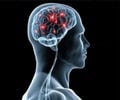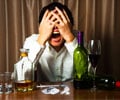- More Information on Hallucinations - (http://www.faqs.org/health/topics/55/hallucinations.html)
- Hallucination - (http://en.wikipedia.org/wiki/hallucination)
- About Hallucinations - (http://www.nlm.nih.gov/medlineplus/ency/article/003258.htm)
What is Hallucinations?
A hallucination is the sensation of a real perception in the absence of an actual external stimulus. They are often vivid and substantial. Unlike dreaming, hallucinations occur during the state of wakefulness. Hallucinations are different from illusions, wherein illusions are distorted perception of a real object.
The term “Hallucination” was coined by Sir Thomas Browne in 1646, derived from the Latin word “alucinari”, that means to wander in the mind.
Types of Hallucinations
Hallucinations can be classified in terms of the sensory modality that they occur.
- Visual – Sight: Seeing things that do not actually exist refers to visual hallucinations. Simple visual hallucinations are formless visual hallucinations, i.e., seeing lights, geometric shapes, colors and some indiscrete objects in the absence of any actual stimulus. Complex hallucinations are lifelike images of things, animals and people.
- Olfactory – Nose: Smelling of odors that are not really present is called olfactory hallucinations, also called “phantosmia”. Commonly perceived odors include smells such as rotting fish, feces, smoke, cooking food, flowery smells, etc. While phantosmia is an olfactory hallucination, parosmia refers to an olfactory illusion.
- Olfactory hallucinations can occur due to damage of the nervous tissue carrying smell sensations from nose to the brain. This damage can be a result of a brain tumour, neurosurgery, viral infection or exposure to toxic drugs. Olfactory hallucinations can also occur in the absence of any detectable nerve damage.
- Auditory – Hearing: The perception of sounds without any actual sounds is called an auditory hallucination or “paracusia”. Auditory hallucinations are the most common type of hallucinations and can be elementary or complex. Sounds such as whistling, hissing, etc., are elementary hallucinations. Complex hallucinations include hearing of music, voices and conversations, where the voices being heard can be friendly or aggressive, from familiar or unfamiliar persons and also be unclear. Conditions like Wilson’s disease, multiple sclerosis, systemic lupus erhythematosus, sarcoidosis, etc., can present with auditory hallucinations. Psychiatric illnesses like schizophrenia and dissociative identity disorder also present with auditory hallucinations.
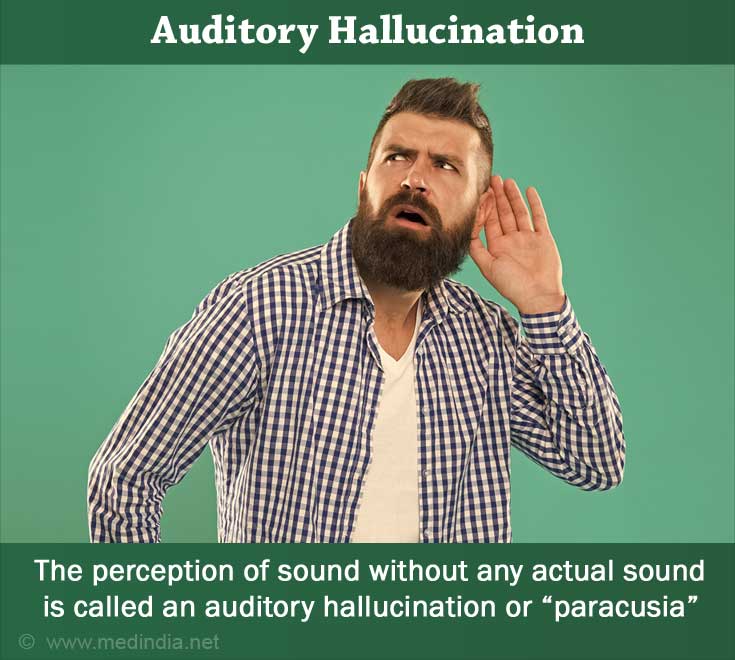
- Tactile – Sensation of touch: The false sensation of physical contact with an imaginary object is called a tactile hallucination. Tactile hallucinations can be the feeling of insects or small animals crawling over their body or experiencing the feeling of being kissed or someone lying by their side. Conditions such as Parkinson’s disease, Ekbom’s syndrome, delerium tremens and schizophrenia present with tactile hallucinations.
- Tactile hallucination in phantom limb refers to the pain felt in a limb that has been amputated.
- Gustatory - Digestive system: A gustatory hallucination is the perception of tasting something, in the absence of the material tasted. Usually, these hallucinations are unpleasant flavours like rotten eggs, vomit, etc. This condition is known to occur in temporal lobe epilepsy.
- Proprioceptive – Sensation of position of body parts in relation to the body: The sensation of the limbs being in a different location from the physical body. Experiences like floating, rising above the ground or rolling on the floor are some of the examples of proprioceptive hallucinations.
- Equilibrioceptive – Sense of balance: The feeling of loss of balance after getting off a merry-go-round ride is an example of an equilibrioceptive hallucination. It is commonly seen to occur in conditions such as schizophrenia, brain damage, brain tumours and depression.
- Nociceptive – Sense of pain: Feelings of random and unexplained pain without any external stimulus or any other systemic cause is referred to as nociceptive hallucination. It is often seen in bipolar disease.
- Thermoception – Sense of heat or temperature: The feeling of extreme heat or cold in the absence of diseases or illness. This is often felt by people with schizophrenia or those who have withdrawal symptoms from caffeine, alcohol or drugs.
- Chronoceptive – Perception of passage of time: People under the influence of drugs like depressants, alcohol and entheogenic drugs usually suffer from impairments in perception of time.
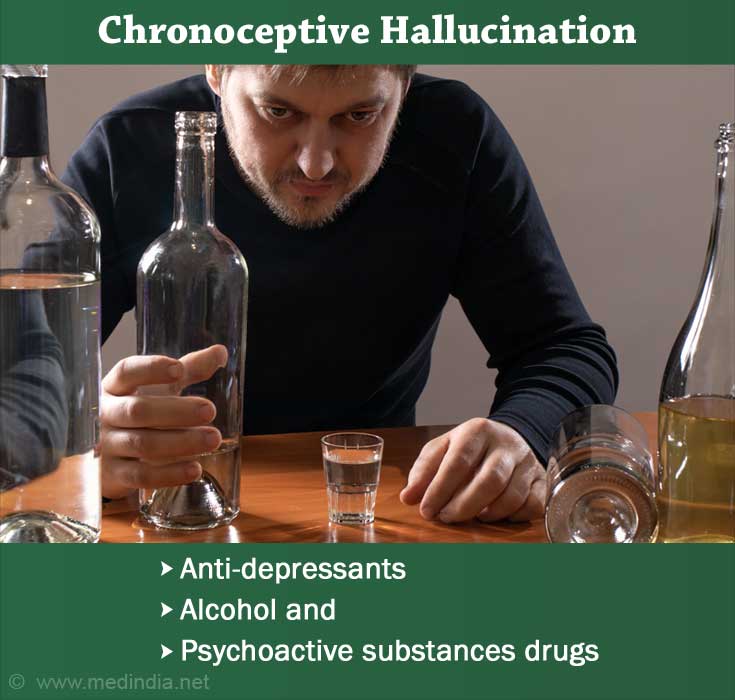
- “Hypnogogia” is the state of transition from wakefulness to sleep and “hypnopompia” is the onset of wakefulness from sleep. Hypnogogic hallucinations and hypnopompic hallucinations are considered to be normal phenomena, in which the semi-sleeping person sees some events happening that may appear real.
What are the Causes of Hallucinations?
Hallucinations can be caused by various factors and conditions.
- Under the influence of alcohol, drugs like cocaine, marijuana, LSD, heroin, etc.
- Conditions like delirium and dementia
- Very high fever, especially in children and elderly
- Psychiatric illnesses like schizophrenia and major depression
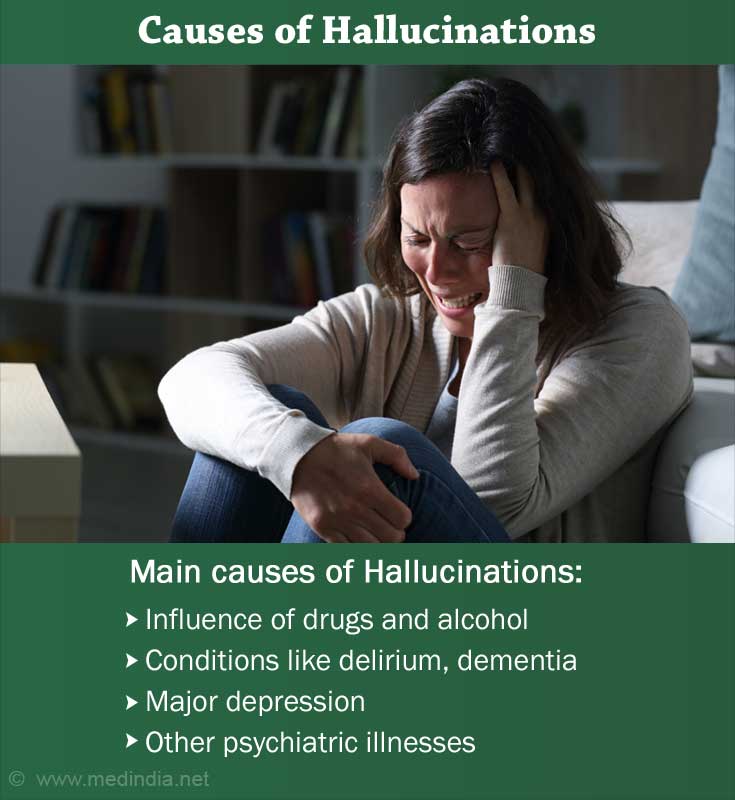
- Severe illness like kidney failure, liver failure, brain cancer, etc.
- Lesions and tumors in brainstem
- Person with narcolepsy can have hallucinations that are different from their dreams
- Some of the drugs that cause hallucinations include medications given for depression, psychosis, epilepsy and Parkinson’s disease
- Terminal stages of illness like cancer and AIDS
- Social isolation
How to Diagnose Hallucinations?
The diagnosis of hallucinations can be made by a psychiatrist with the help of a family, friend or a caretaker. A number of factors can trigger hallucinations and these factors must be kept in mind if a person is acting weirdly or talking irrelevantly. The causes of hallucinations can be identified by the doctor based on the medical and emotional history of the patient.
If a person is suspected to have hallucinations, it is best to be with them at all times. The hallucinations can be dangerous as they may instigate fear and paranoia in the person, which in turn can make them take drastic actions.
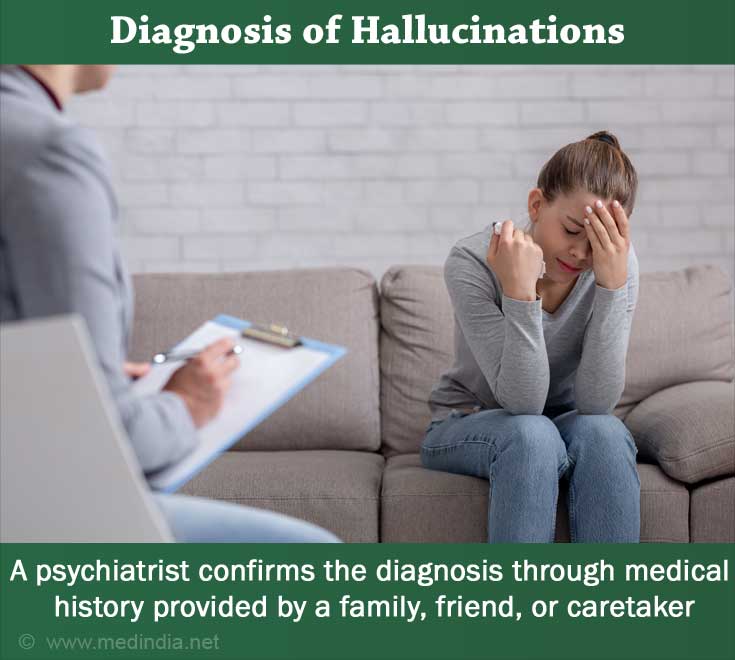
How to help a person who is having hallucinations
- Call out the person’s name quietly and be with them
- Ask them to describe what they are seeing or feeling. Do not deny what they are talking about
- Ask whether there is anything you can do to help them
- Assure the person that the voices or any other stimulus will go away shortly
- Distract the person from these feelings in a very gentle manner and make them feel relaxed
- Do not argue with them or rush them up to be quiet
What is the Treatment for Hallucinations?
The treatment of hallucinations involves treating the underlying cause that may be organic or psychiatric. Some measures can be taken to manage or prevent hallucinations. For severe hallucinations, antipsychotic medications may be prescribed.
- Stress management, regular exercise, healthy eating and adequate sleep are some of the simple measures that can prevent hallucinations if they are less severe.
- Drugs causing hallucinations, like cocaine, LSD, etc. must be gradually reduced and stopped. Rehabilitation programs can help people get over their addiction to alcohol and drugs.
- Education and counseling the patient and family to help cope with the hallucinations can help.
- Certain antipsychotic drugs like olanzapine and risperidone are prescribed for treatment of hallucinations.
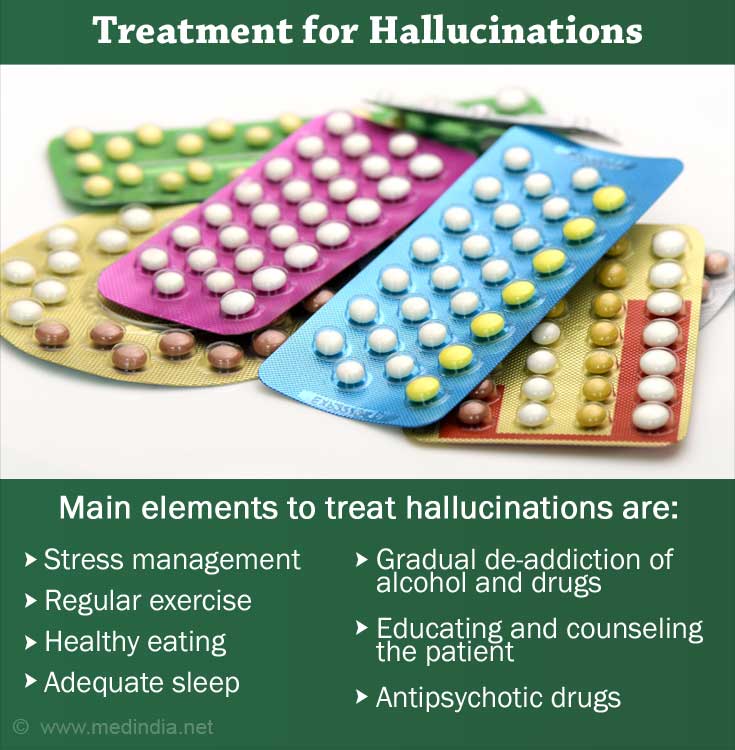
Prognosis of Hallucinations
Recovery from hallucinations depends on the underlying cause of the condition. Hallucinations that occur due to toxicity of drugs, addiction and other organic reasons can recover better by staying away from the hallucinogenic agent. When hallucinations occur as a symptom of mental illness like schizophrenia and psychosis, antipsychotic medications and other treatments for the illness can help overcome hallucinations.
Health Tips
When hallucinations are recognized the person can follow some tips to keep them at bay.
- Distract yourself: If you are having auditory hallucinations, using a personal music player with headphones can keep you distracted. Visual or other hallucinations can be overcome by leaving the place and occupying yourself with any interesting hobby or an outdoor activity.
- Fight back: Just “talk back” to those voices loudly and deny their presence.
- Accepting the hallucinations: Accepting that these voices are a part of life and are not real can make it easy to ignore them.
- Be mindful about the symptoms: Learning and educating yourself about the hallucination can help accept them, fight back and also come out of it.
- Selective response: Preparing the mind to set aside a separate time for hallucinations can help postpone them. For example, the patient asks the voices to come back later and only on appointment basis.




